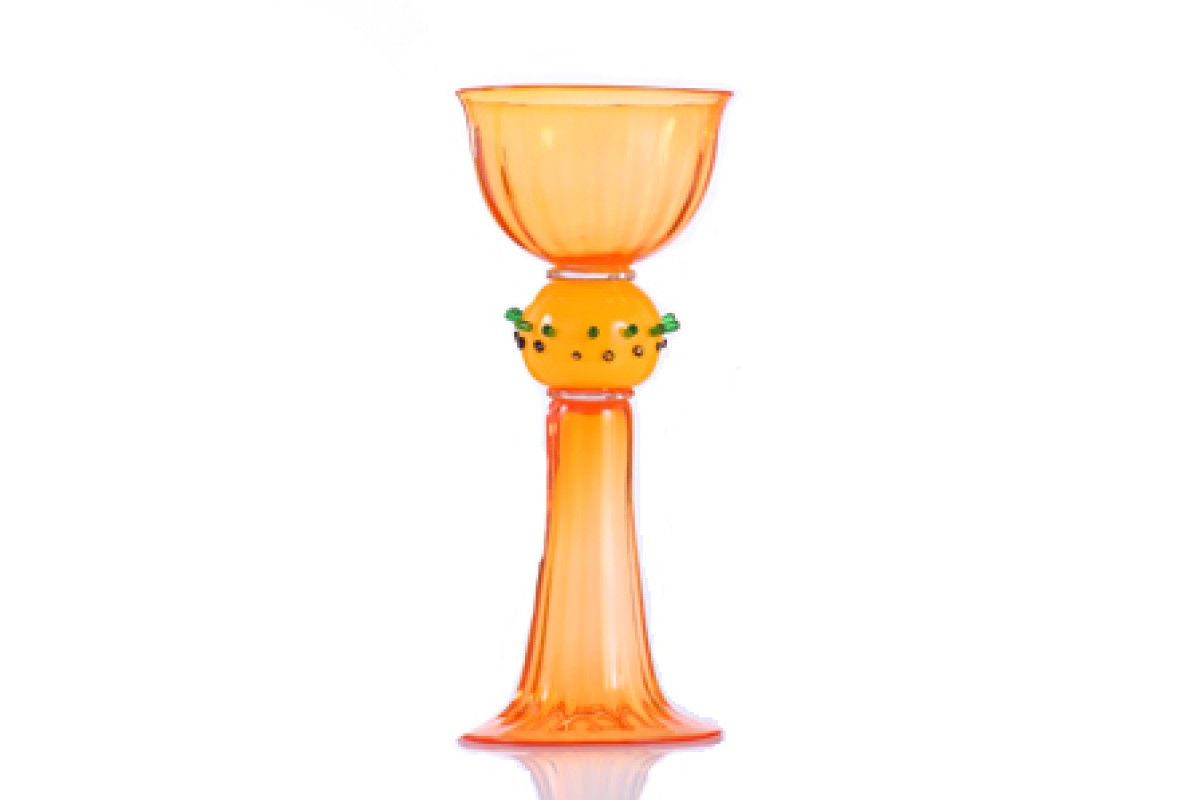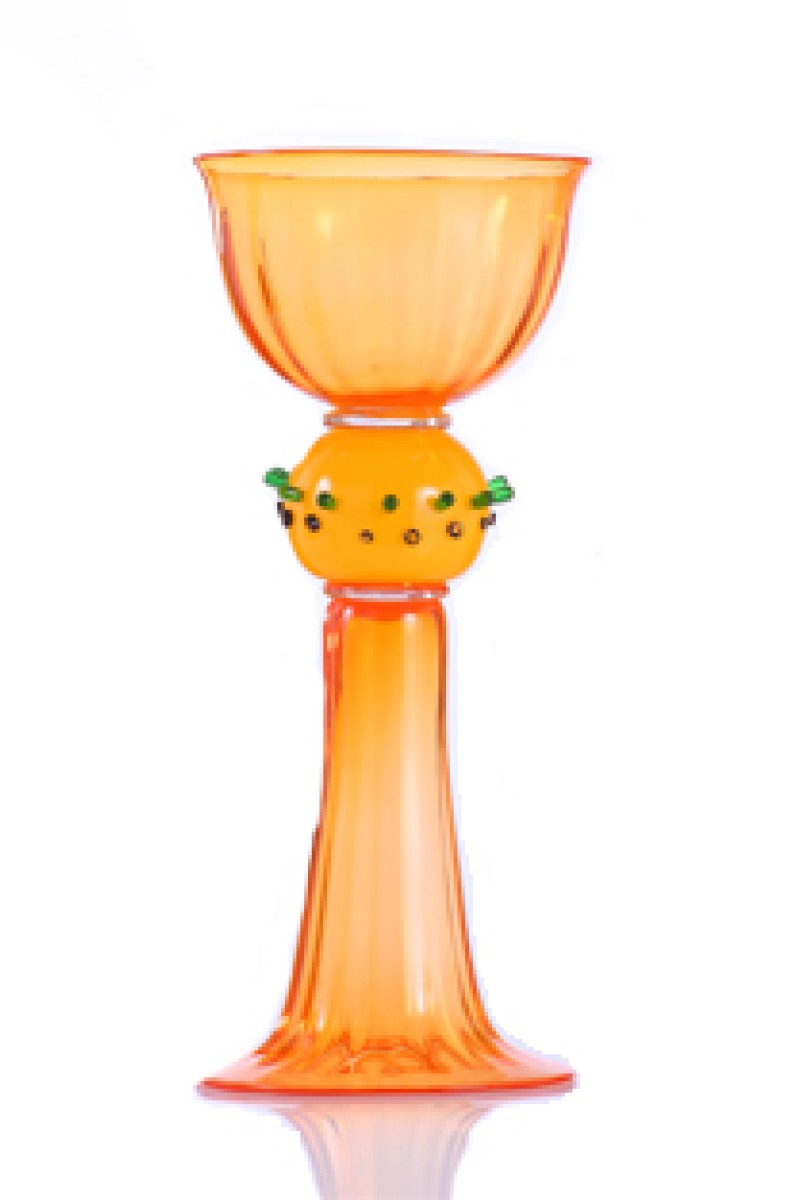 Glass artists often use everyday life as the inspiration for their creations, such as Joy Huang's Flame Dance
Glass artists often use everyday life as the inspiration for their creations, such as Joy Huang's Flame DanceAlthough this exotic art form may be a new concept to some, glassmaking has a mesmerising and bountiful history. The origins of glassmaking can be traced back to 2500BC. The Romans dabbled in this art, creating beautiful glass decor and by 1500BC glass was being shaped into beads and vessels in Egypt and Mesopotamia.
Around 30BC, the blowpipe was invented to help the glassblower in shaping the soft glass to its final figure; in order for that to happen, the temperature needs to be around 700-1000 degrees Centigrade.
Joy Huang's first love was pottery. But she came across glassmaking at an art college in Wanganui, New Zealand, when she saw students blowing glass in a workshop. That's when she pledged her love to glassblowing.
Attracted by the "beautiful material", she quit her personal pottery studio in Kaohsiung, Taiwan, to learn glass art in Britain. Over the years, her influences have come from the different artists and cultures she has met on her journeys to glass studios in countries such as Norway, Thailand, New Zealand, Germany and Japan.
She was awarded the Colin Gill Memorial Award for the best technique. Having established the Glassblower in Residence Project in Tittot Museum, in Taipei, Taiwan, she then set up her very own Joy Huang Studio Glass.
For the past fortnight, she's displayed some of her pieces at the touring Contemporary Art Glass in Asia exhibition, at Hong kong Polytechnic University in Hung Hom. One piece, Flame Dance, inspired by the sun, gives the impression of watching dancers' swaying skirts.
"Most of my work is inspired by everyday life," says Joy. She always likes to plan and sketch before she creates a piece of work, but sometimes incorporates new ideas as they come to her.
Being a glass artist isn't always easy. Although Joy sells her art pieces, she has encountered financial difficulties. She balances her time between working as an artist and a teacher.
The physical risks from her work - of being burned by fire or dehydrated from the intense heat - are minimised once you've learned the techniques, she says.
Another glass artist with work at the exhibition is Wong Kwok-chung, from Hong Kong. He founded the Kaleidoscope Studio in Shek Kip Mei in 1993.
His studio promotes glass art by holding exhibitions and workshops for members of the public to try their hand at creating their own glass artwork.
Wong first started experimenting with glass in the 1980s and found that he really enjoyed it. However, he encountered difficulties in mastering the different techniques.
Like Joy, the inspiration for his work comes from his surroundings.
At the exhibition, he displayed life-sized dummies named Desire. "It represents the human desire to recall memory," he says.
"The piece consists of life-sized baby pacifiers; it signifies adults' hidden desire for past memories.
"Upon seeing these dummies, my friends find that they want to bring them home."
